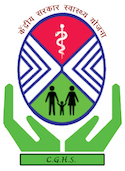Ashtang Yoga
Now a day everyone is doing Yoga. In the name of Yoga we are just practicing some postures and some breathing exercises. No doubt these two are benefiting a lot; but these are not the complete Yoga. Yoga consists of eight limbs namely – Yama, Niyam, Asana, Pranayama, Pratyahara, Dharna, Dhyan and Samadhi. So when you are practicing Asanas and the Pranayama; you are just doing one fourth of real Yoga. You can imagine when only one fourth is benefiting this much how much beneficial the complete Yoga will be when practiced sincerely.
One very important thing to remember about the eight limbs of yoga: These are not commandments or laws! They are more like guidelines for living. But if you don’t follow the guidelines, it doesn’t constitute any sort of “sin.” Success with your yoga practice will simply be easier if you live your life according to eVaidyaJi suggestions.
However, if you don’t want to meditate, give up meat, or even relinquish your materialistic nature, don’t pressure yourself. Remember that yoga is not only a practice, but something that happens to you. As you progress and grow, you may find that you’re naturally less materialistic, you lose interest in eating meat, or you become drawn to meditation as the next logical step in your journey.
Yama: these are universal mode of conduct i.e. how a fellow behave with every creature of this universe. Five Yamas are as follows:
- Ahinsa: Ahinsa consists of A+ Hinsa; here A stands for not or absence of and hinsa stands for violence. Here Ahinsa is more than a negative commandment; it means to love each and every creature of the world as only when a fellow loves every one; only then he will be completely non – violent.
- Satya: Satya means truthful. Truthfulness should not only be in words but in thoughts and deeds. If you cannot be true to others you should be true to yourself at least.
- Asteya: literally Asteya means non – stealing. i.e. a fellow should not involve in unnecessary claiming for the things which are not his property.
- Brahmacharya: dictionary meaning of Brahmacharya is the life of celibacy but when we see it in broader sense it appears to be control over all the senses. It might be the sense of taste, sense of sight …. It is never possible to totally abandon the sense organs. Our life is dependant of proper working of the sense organs. These fulfill some basic needs of life so the basic requirements of the senses organ must be fulfilled and these should be satisfied moderately.
- Aparigraha: Means non – collecting. i.e. a fellow should be concerned with his immediate needs and should not involve too much in collection of different worldly materials. He should think about the necessary things only.
Niyam (personal mode of conduct); it tells about how a person should behave towards himself. Following five commandments comprise of Niyama:
- Saucha: it means cleanliness or purity. It does not imply only the physical cleanliness but also the cleanliness on psychological level – mental purity; purity of thoughts.
- Santosha: means the contentment/ satisfaction. Being satisfied with whatever a fellow gets is Santosha. It is the key to happiness.
- Tapas: self discipline to achieve a definitive goal is termed as Tapas.
- Swadhyaya: here swa means self and Adhyaya is study i.e. study of self is Swadhyaya.
- Ishwar Pranidhan: devoting everything whatever a fellow earns to the GOD and considering it as a blessing (for good as well as for the bad) from him is termed as Ishwar Pranidhan.
Asana (Yoga Posture): sage Patanjali defined Asana as “Sthiram Sukham Asanam” i.e. a posture in which a fellow is stable and feels ease; is Asana. If you are not easy and stable in any posture then you are not practicing Asana correctly.
Pranayama (Regulation of breath): the word Pranayama consists of Pran+ Ayama which means life force life force + balance i.e. balancing the life force (the flow of breath) is Pranayama.
Pratyahara (Detachment): detachment from all the sensory pleasures and keeping the senses under control.
Dharna (Concentration): total concentration on a task or point in which a fellow is engrossed.
Dhyan (Meditation): higher concentration on an object such that the fellow is too much involved in the object that he forgets about his own existence.
Samadhi (Pure Consciousness): It is a state of full consciousness and alertness.














